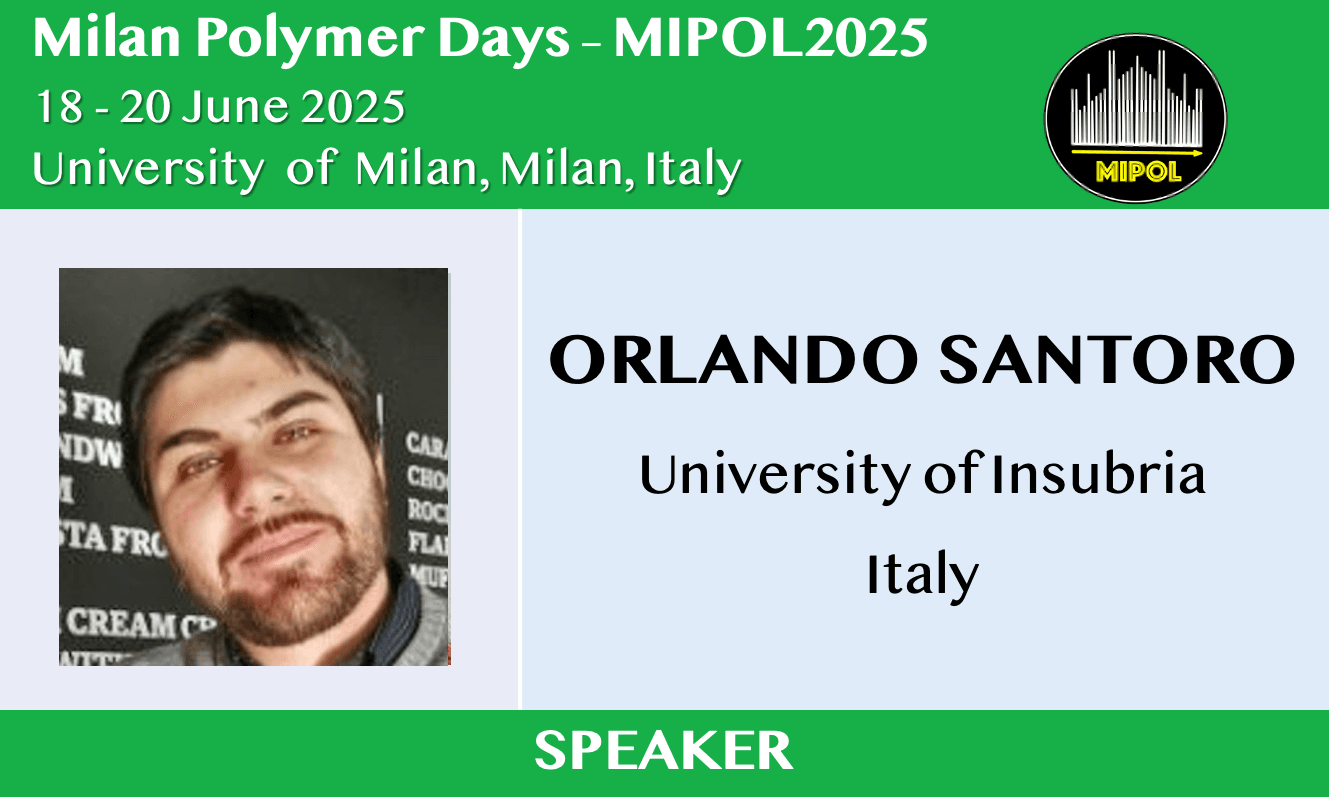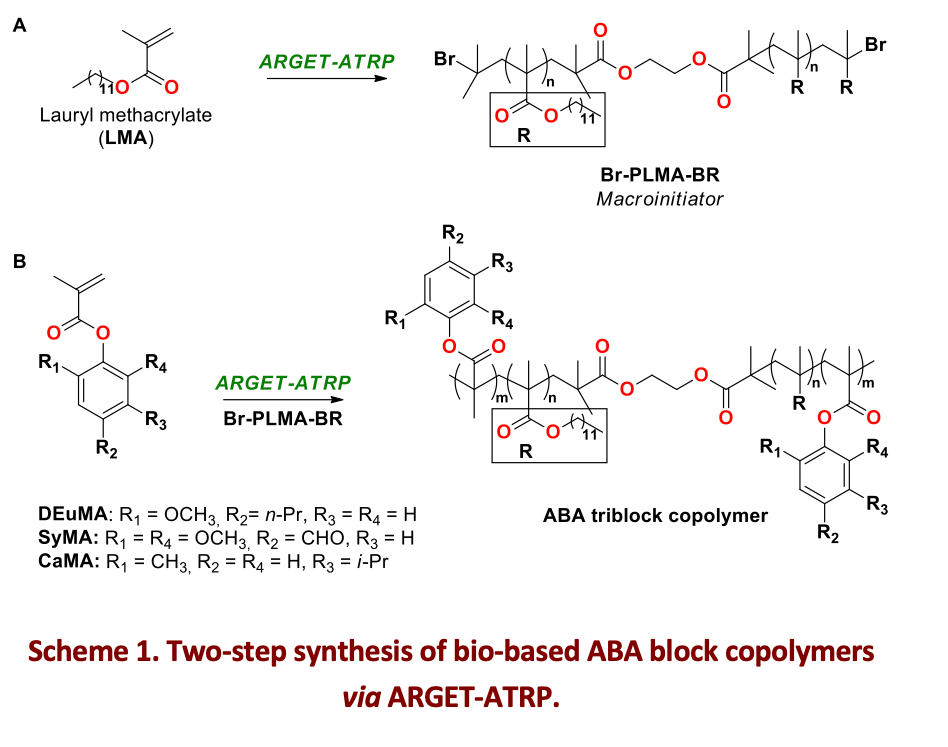Tuning thermal and mechanical properties of ABA copolymers from elastomers to thermoplastics
Abstract

During the last decades, intensive efforts have been devoted to the development of materials that are both derived from renewable sources, hence fulfilling the principles of circular economy, and able to allow for prolonged goods’ life cycle reducing the production of waste. In this scenario, thermoplastic elastomers (TPEs) have been emerging as promising materials, alternative to chemically crosslinked polymers, finding application in electronics, adhesives, and automotive industries. In fact, TPEs are characterized by physical and reversible chains-entanglements which confer processability and recyclability (like thermoplastic materials) along with elasticity (like elastomers). TPEs generally consist of triblock structures of the type ABA featuring a central soft block of low Tg polymer and external hard blocks of higher Tg macromolecules [1]. Despite the large interest, reports on bio-derived TPEs remain scant. Recently, the synthesis by a Controlled Radical Polymerization (CRP) technique, namely Atom Transfer Radical Polymerization (ATRP), of ABA structures exhibiting TPE behavior, having as the soft block a polymer derived from lauryl methacrylate (LMA), and hard blocks of poly-methyl methacrylate was reported [2]. Due to their living character allowing for the so-called chain-end fidelity, meaning the preservation of the activity at the chain terminal allowing for the elongation of pre-formed polymers, CRPs are particularly suitable for this scope. Among CRPs, Activator ReGenerated by Electron Transfer Atom Transfer Radical Polymerization (ARGET-ATRP) is a convenient technique for the synthesis of sustainable polymers. Indeed, it requires low amounts (as low as ppm levels) of catalysts based on benign and abundant metals (Cu, Fe) allowing, in turn, to avoid the purification steps to remove catalytic ashes potentially leached in the final polymer, significantly reducing the environmental impact of the process [3, 4].
In this contribution, the synthesis via ARGET-ATRP of bio-based block copolymers of the type ABA displaying thermal- and mechanical properties dependent on the nature of the A blocks, derived from functionalized molecules from renewable feedstock, is discussed. The ABA triblock copolymers feature a soft central block B having a low Tg value consisting of poly-lauryl methacrylate (PLMA), a fatty-acid-derived polymer, and in hard blocks A with high Tg (above room temperature) made of methacrylic derivatives of bio-based molecules such as dihydro-eugenol (DEuMA), carvacrol (CaMA) or syringaldehyde (SyMA). Copolymers with different chemical composition have been successfully synthesized from a bifunctional PLMA macroinitiator (Scheme 1). The polymerization conditions (i.e. temperature, reducing agent/initiator ratio) have been modified depending on the monomer employed. It was observed that the lowest Tg of ABA copolymers was not drastically influenced by the Mw of the central PLMA block, while the nature of the hard blocks strongly impacted the higher Tg values; indeed, SyMA- and DEuMA-based materials exhibited Tg higher than those containing CaMA. Remarkably, stress-strain tests highlighted the possibility of using molecules from renewable feedstock to produce advanced bio-based materials with a wide range of mechanical properties, spanning from elastomeric- to thermoplastic behavior.

References
- J. G. Drobny, Handbook of thermoplastic elastomers 2014 Elsevier, 2014.
- D. P. Chatterjee, B. M. Mandal Macromolecules 2006, 39, 9192.
- A. L. Holmberg, J. F. Stanzione, R. P. Wool, T. H. Epps ACS Sust. Chem. Eng. 2014, 2, 569.
- X. Pan, M. Fantin, F. Yuan, K. Matyjaszewski Chem. Soc. Rev. 2018, 47, 5457.
Acknowledgments
All the authors acknowledge financial support by “Fondi di Ateneo per la Ricerca” (FAR) 2021 and Prometeon Tyre Group for the support in performing thermal- and mechanical analyses.